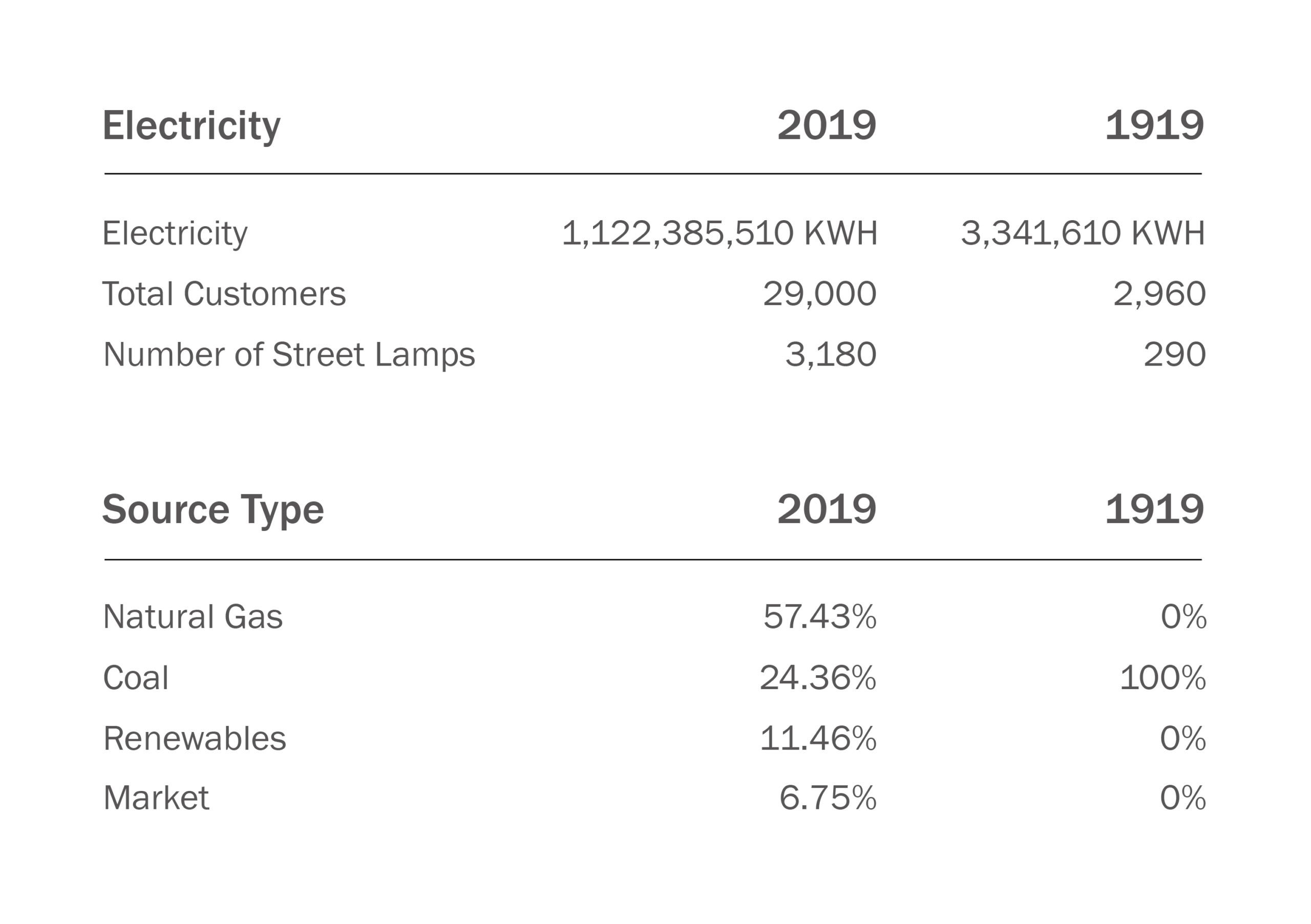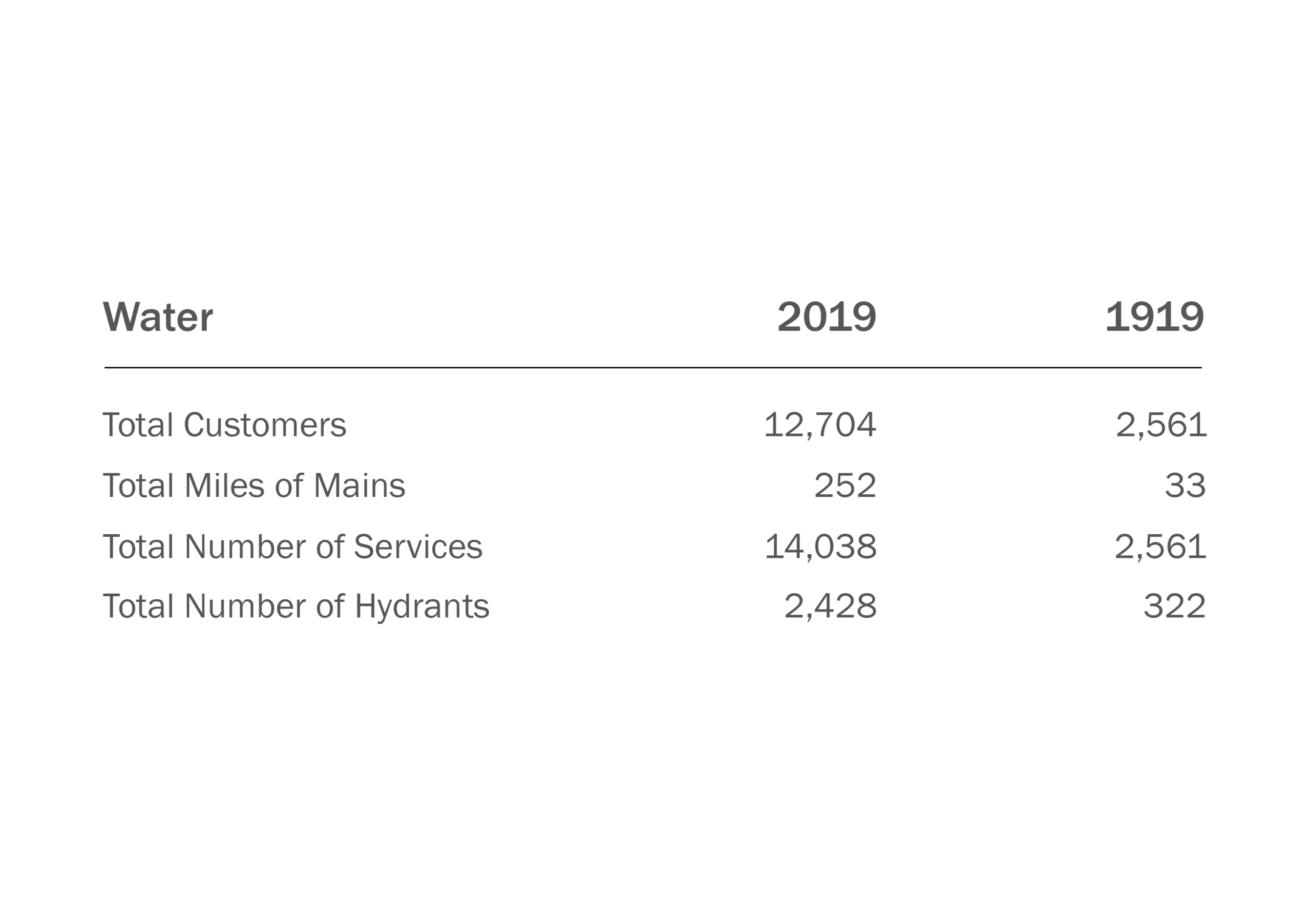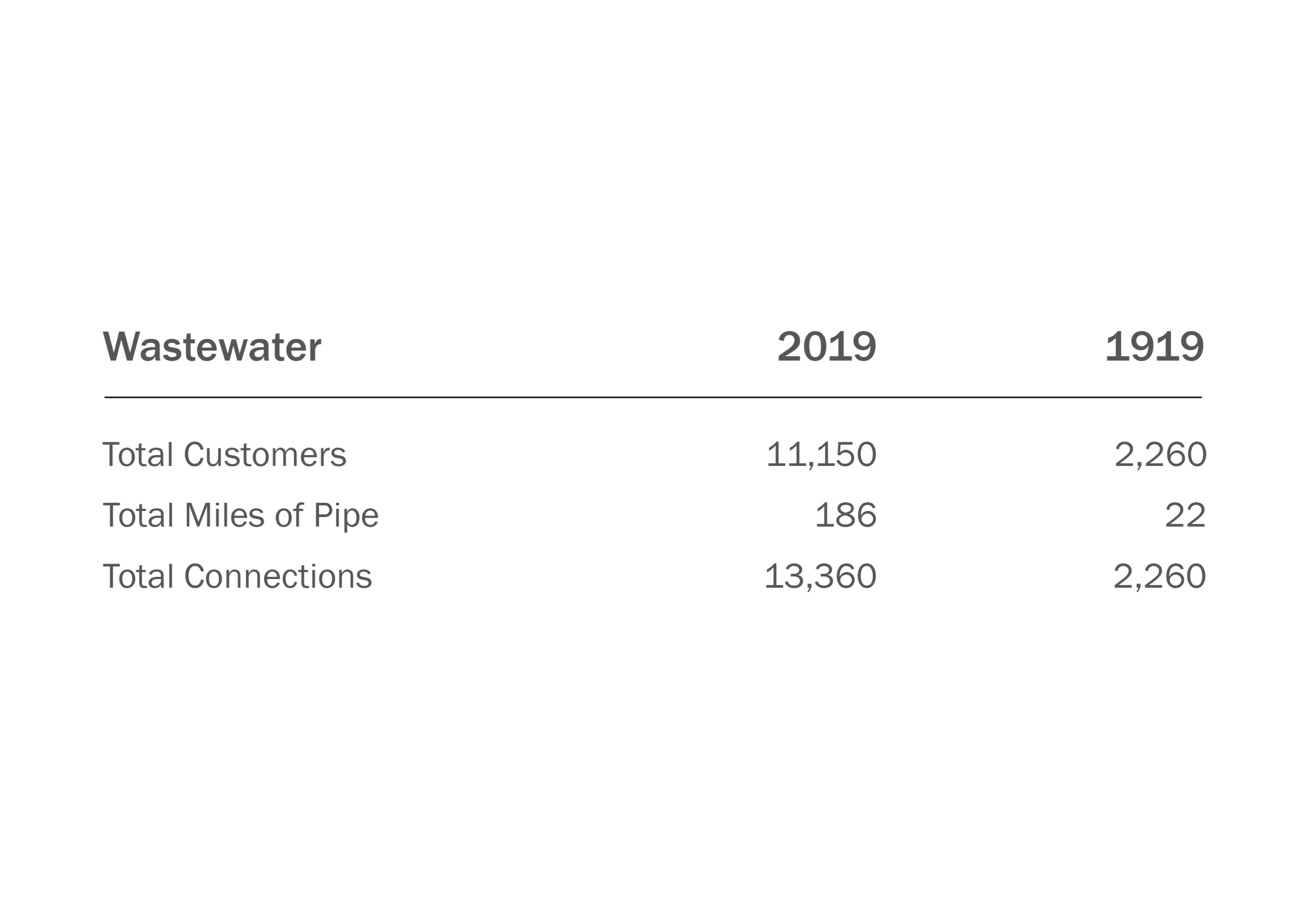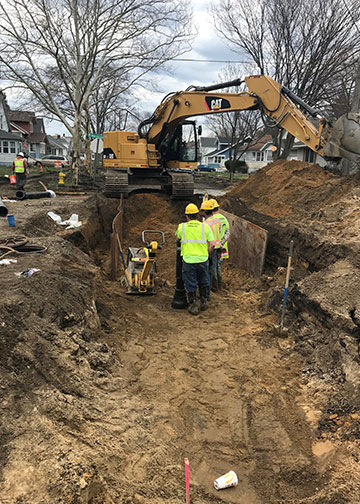Essential
Key facts about our utility services, and an improved approach to project planning.
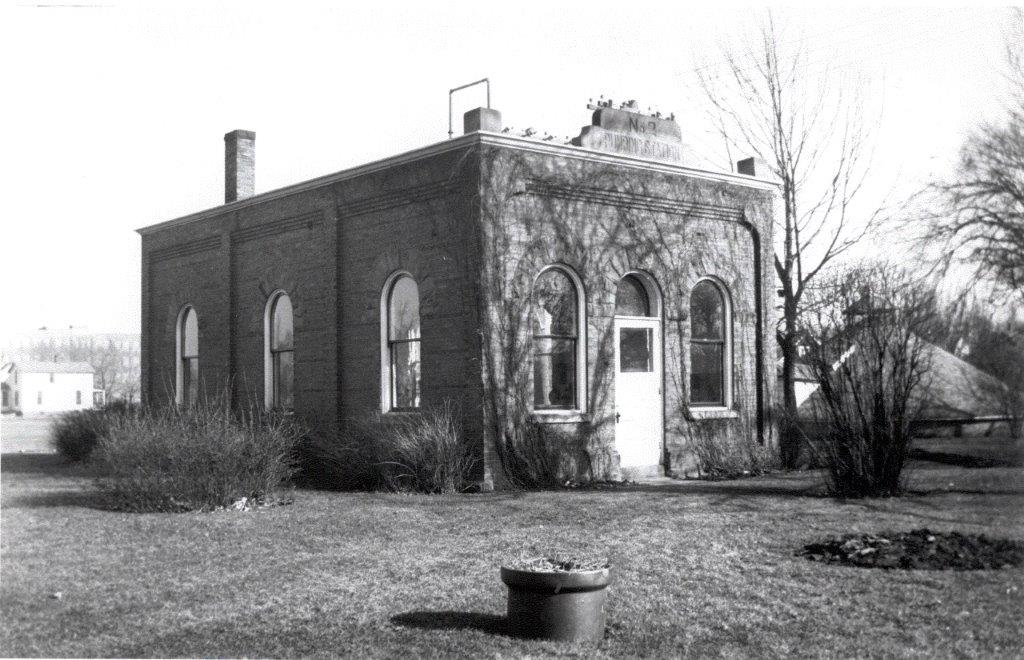
Comparing Between Now and 1919
One hundred years ago, Holland Board of Public Works was actively growing and shaping how our community functions. While our population has increased and the scope of our services has modernized, HBPW continues to serve the best interests of the public.
We’ve taken a look back to compare where we were 100 years ago to today. Today, we can’t imagine life without electricity, water and wastewater utilities, but 100 years ago only a fraction of people had access.
Electricity
Holland Board of Public Works provides electricity to the City of Holland and surrounding townships: Holland Township, Park Township, Laketown Township and Fillmore Township. HBPW generates electricity at the Holland Energy Park and supplements demands with the peaking generators located on 48th Street. A portfolio of additional electricity resources including capacity ownerships in two coal plants, renewables energy, and market purchases balance the supply needs of the HBPW electric system.
Room to Grow: Did you know that if you are building in any township surrounding the City of Holland, you can choose Holland BPW to be your electricity provider? Contact us for a consultation prior to beginning construction.
Water
Holland Board of Public Works pumps and treats water from Lake Michigan to residents of the City of Holland and portions of Park, Laketown and Holland Charter Townships south of Lake Macatawa. Water is also sold on a wholesale basis to Park Township north of Lake Macatawa and the City of Zeeland.
Nice to Know: Did you know that the State of Michigan Department of Environment, Great Lakes & Energy (EGLE) revised the lead and copper rules for water systems? Holland Board of Public Works continues to be in full compliance of the new rules.
Wastewater
Holland Board of Public Works operates a water reclamation facility that receives and treats wastewater from the City Holland and Fillmore, Laketown, Park and Holland Charter Townships.
All Systems Go: Holland Board of Public Works conducted model testing to find out if the sewage sludge residuals produced from the processes can be treated in an anaerobic biodigester. With positive results, that the HBPW will move forward with plans to incorporate biodigestion as an environmentally friendly way reduce waste.
Broadband
Holland Board of Public works has over 260 miles of fiber optic cable that span not only the City of Holland but into neighboring townships and beyond, extending to south to Saugatuck and northeast to Jenison.
Over the past year, HBPW Broadband has added new Shared Gigabit Service. The Shared Gigabit provides internet service to business and residents to Holland’s Downtown 8th street area.
What will follow? The Downtown project has given HPBW the opportunity to gain knowledge that will be useful in determining how to serve shared gigabit service to other customers.
Work Smart with Holistic
Project Planning
Reliability of our utility services is essential; people depend on electricity, water, wastewater, and broadband at home, work and school. Maintaining a quality utility system helps our community to continue to thrive. Continuous improvement of our infrastructure ensures reliability of our services. Many projects were completed during the 2019 fiscal year that improve how our systems function.
Holland Board of Public Works evaluates project needs carefully. John Van Uffelen, director of utility services said, “When we approach project planning holistically, we accomplish multiple projects with less time and lower costs than if we were to tackle them individually.”
Holistic project planning is characterized by looking at the big picture. HBPW meets regularly with City of Holland’s Transportation Department to discuss five-year plans for upcoming projects. We coordinate utility and road projects, so that the community experiences fewer disruptions.
A complete water and wastewater system improvement was done on 19th Street, where aging infrastructure was due for replacement. Reconstruction included installation of new sanitary sewer mains, water mains, storm sewer work, concrete sidewalk, concrete drive approaches, curbing and restoration of blacktop pavement.
“The City had plans for roadwork on 19th Street within a few years of our plans. So it made sense to coordinate all the work at once,” said Mark Gipson, water & wastewater civil engineer.
HBPW practices the same approach for internal projects. The Water Treatment Plant needed to replace a major valve. This maintenance project required taking the water plant off-line. HBPW looked for other projects that would also require the plant to go off-line. Valve replacement on the water main at Perry and 168th Street was also needed. HBPW made the most out of the planned shutdown by scheduling both valve replacement projects during the same time. The faulty valves were replaced and additional valves were added.
“Valves are an important part of the reliability of our water system,” Van Uffelen stated. “They allow us to isolate problems and minimize service disruptions.”
Jim Van De Wege, the water treatment plant superintendent said, “It was the first time the plant went off-line in over 40 years.” HBPW customers did not experience a water shut-off. The Wyoming Treatment Plant was able to supply water to us through an interconnect pipeline. “This was the first time that we needed to use the Wyoming system as a back-up and we were glad that we had it available,” Van De Wege said.
Holistic project planning is a smart approach. Taking care to coordinate efforts and timelines benefits the local community while HBPW does the work to keep all systems functional and reliable.
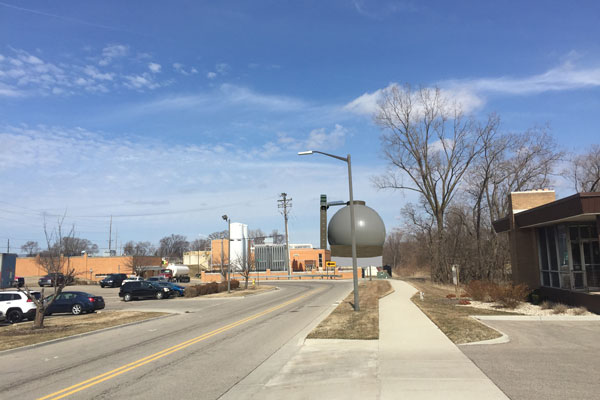
Anaerobic Digestion
The availability of both landfill disposal and land application has become less of an option for The Water Reclamation Facility. HBPW faces increased challenges with decreasing disposal options and increasing disposal costs. HBPW has begun the planning for an anaerobic digestion at the Water Reclamation Facility.
“Our goals are to support the community’s needs far into the future in a sustainable way that offers a positive return on investment,” said Theo VanAken, Water Reclamation Facility superintendent, 2019.
Through in-depth research, HBPW has identified that adding anaerobic digestion is the best solution to challenges associated with disposal of sewage sludge created during the water reclamation process.
“Currently, there is no better way to reduce sludge volume while at the same time creating a renewable energy source using wastewater product,” said VanAken.
Anaerobic digestion is a sustainable technology that significantly reduces the amount of sludge created during the water reclamation process. The byproducts of anaerobic digestion are renewable energy and a higher quality sludge that can be used as fill dirt or nutrient rich fertilizer.
HBPW conducted pilot testing to learn if anaerobic digestion would be beneficial for the Water Reclamation Facility. The results were in favor of anaerobic digestion and the project continues to move forward. Conceptual design of the digester was presented to HBPW Board of Directors and City Council. Construction cost of the digester is estimated at $23M.

What is sewage sludge?
The main byproduct of the wastewater treatment process is solids commonly referred to as sewage “sludge.” Currently about half of this sludge is de-watered and disposed of in a local landfill. The other half is treated to destroy pathogens which converts the sludge to “biosolids.” Biosolids can be beneficially reused as a fertilizer and soil conditioner on area farm fields.

